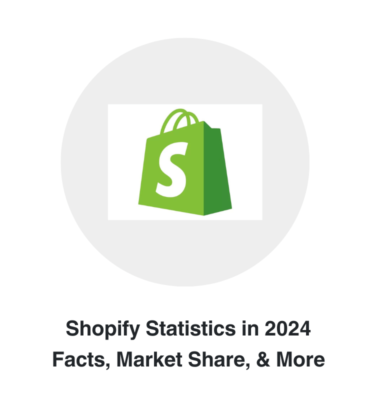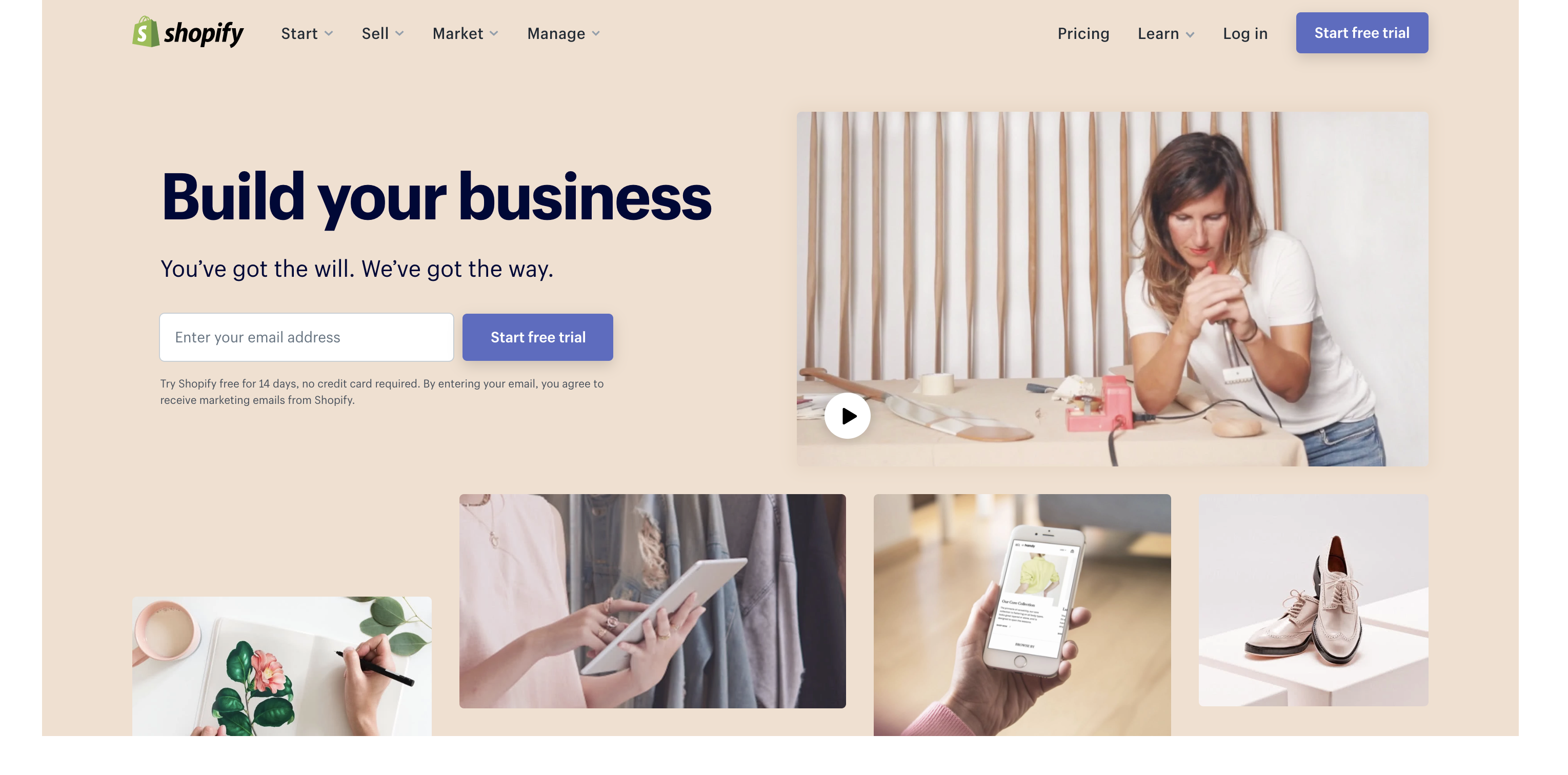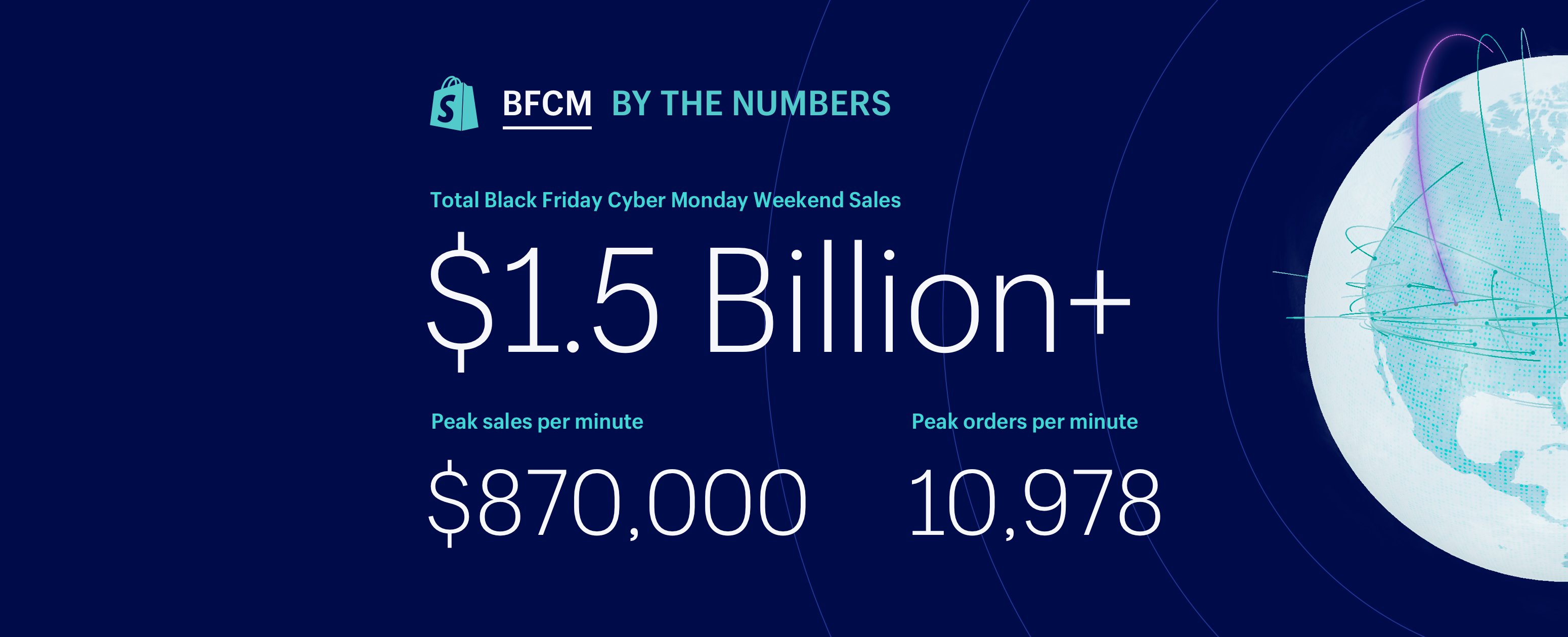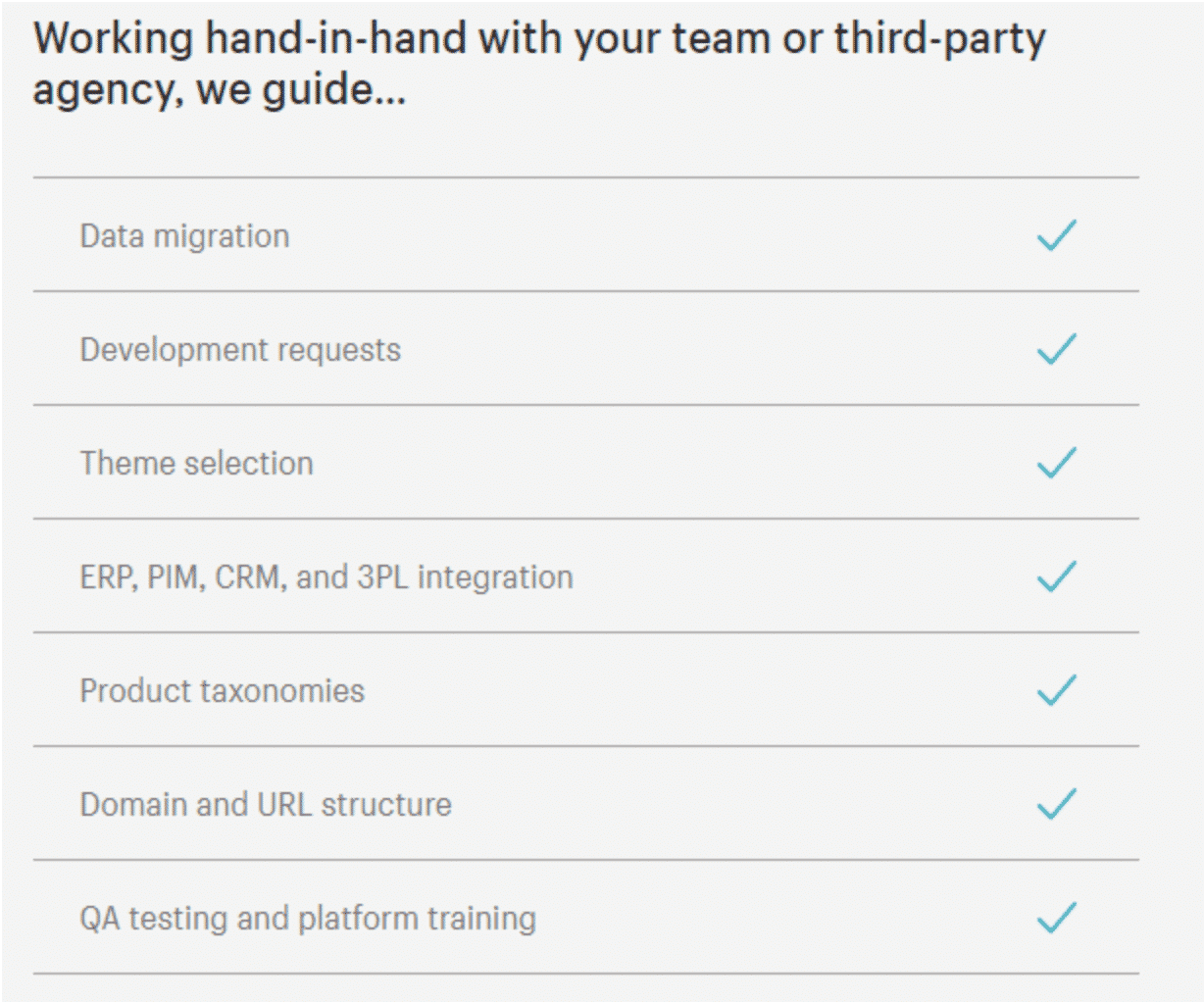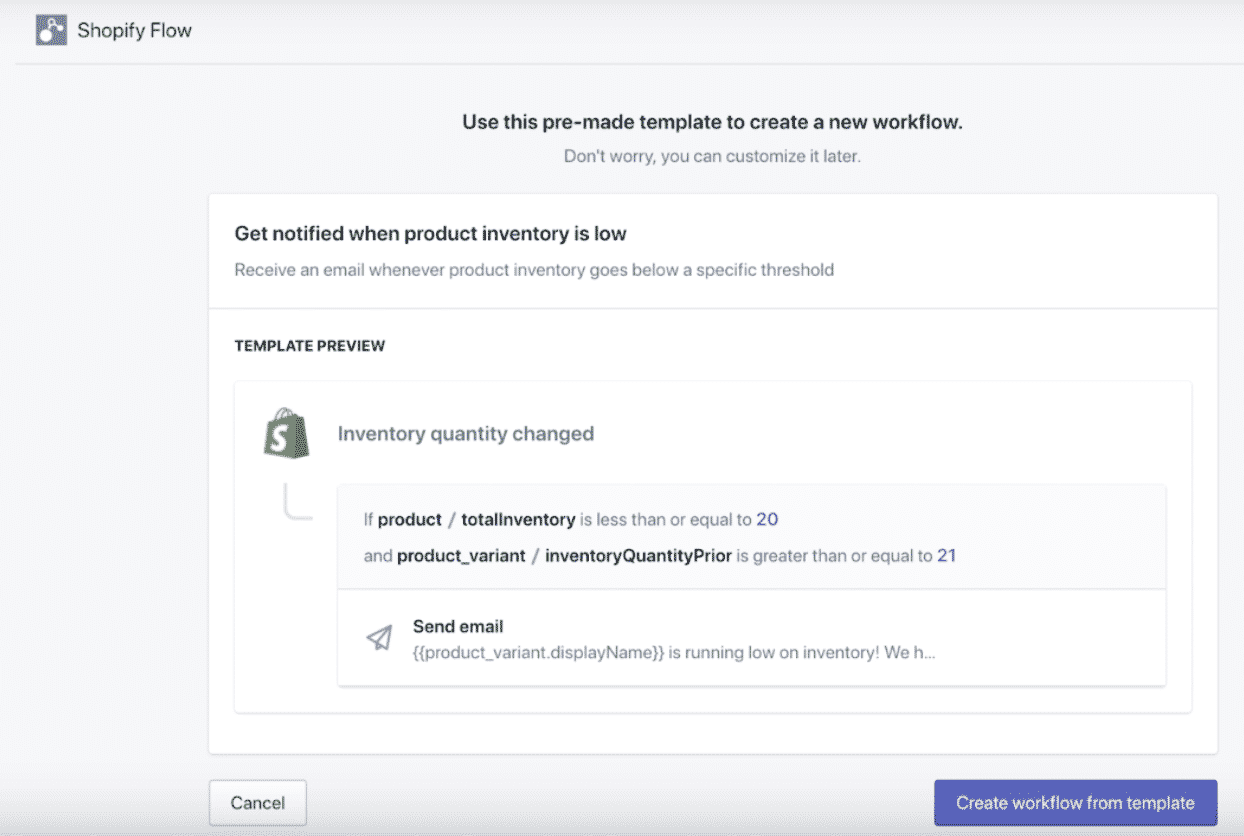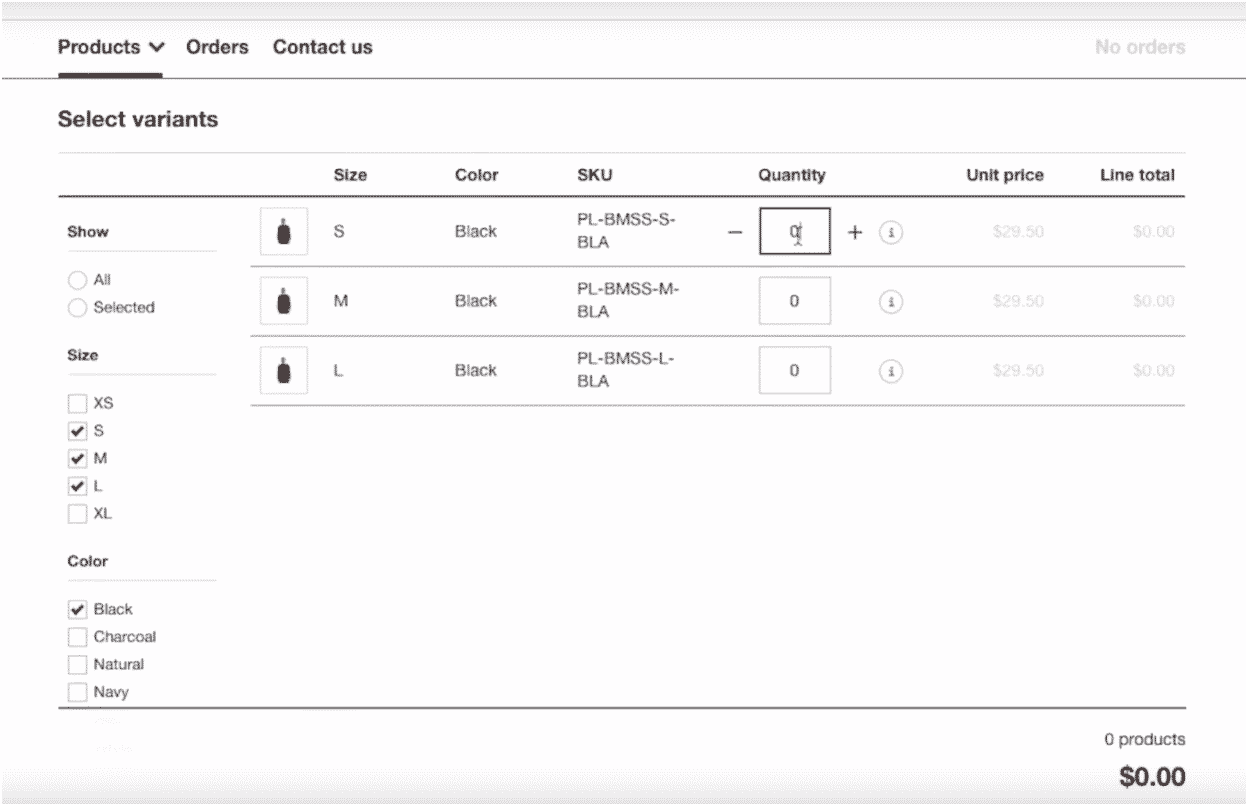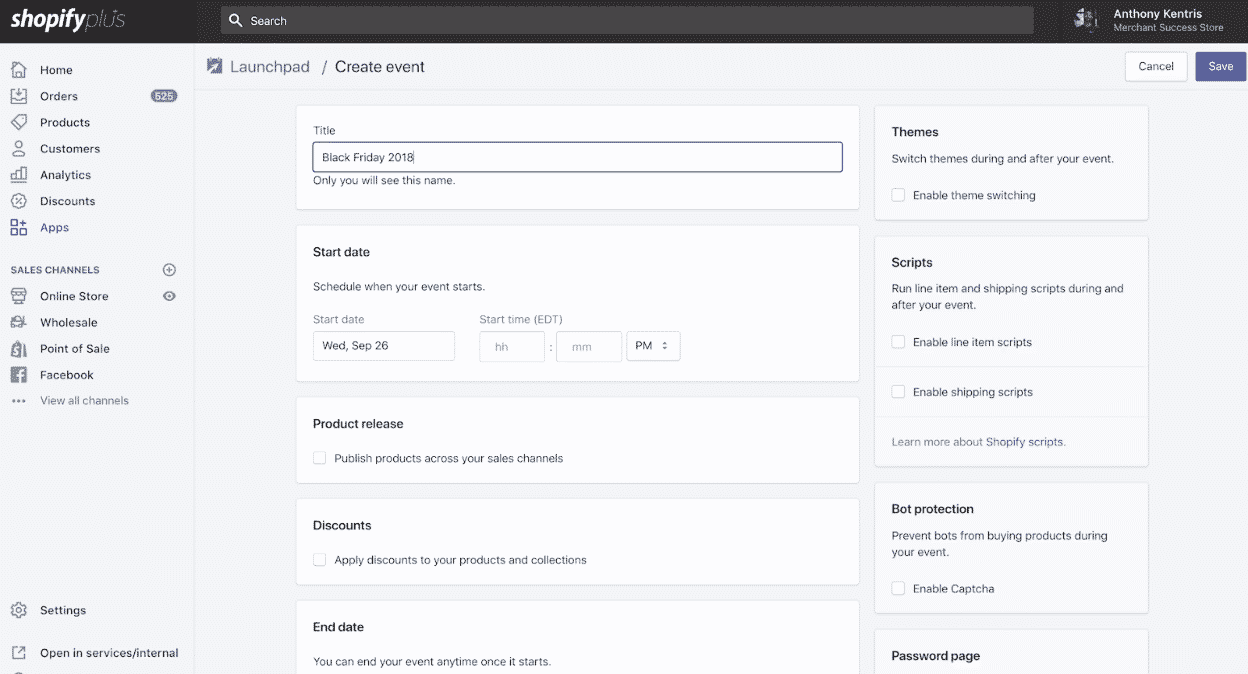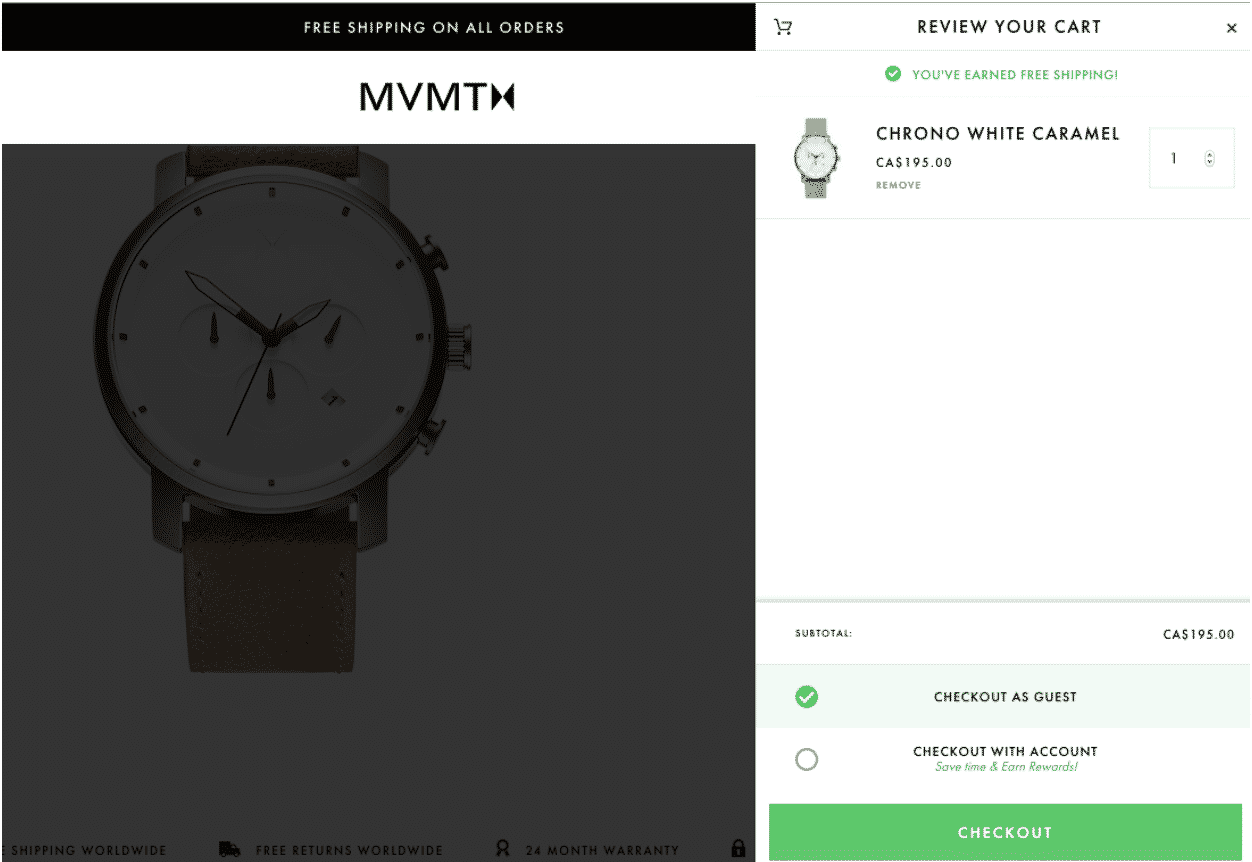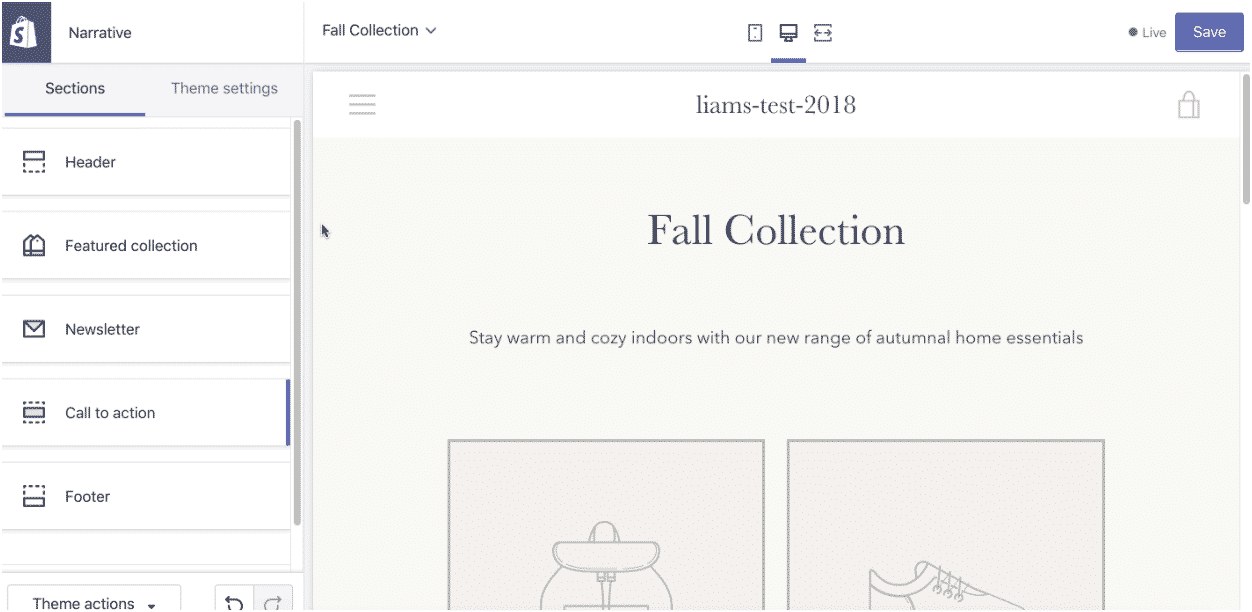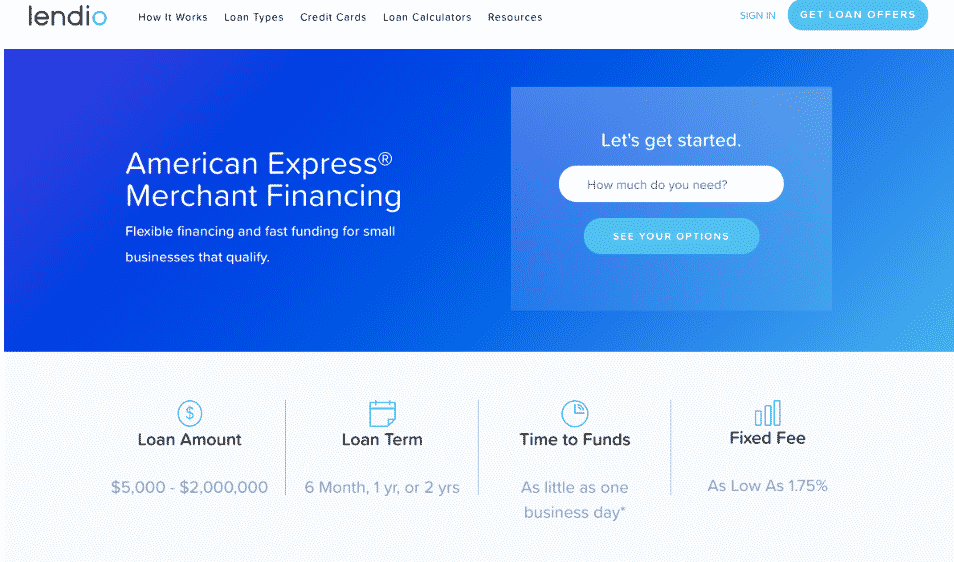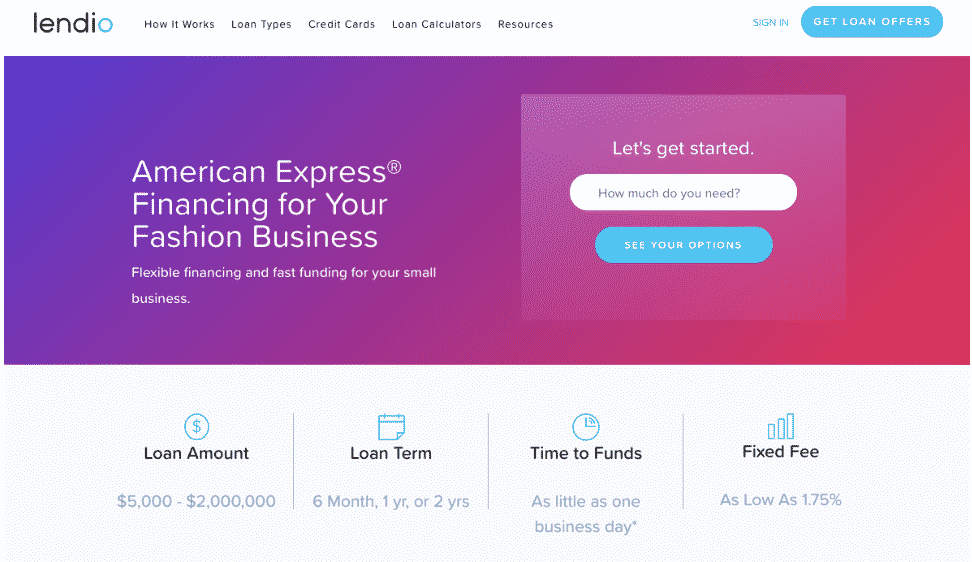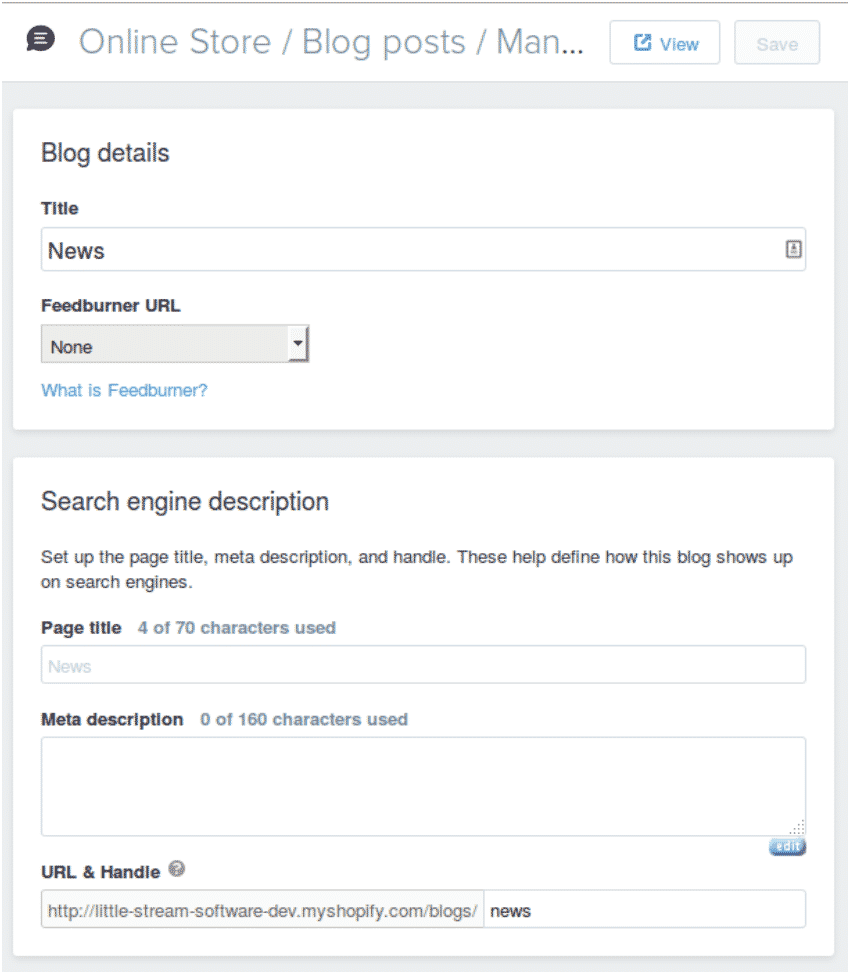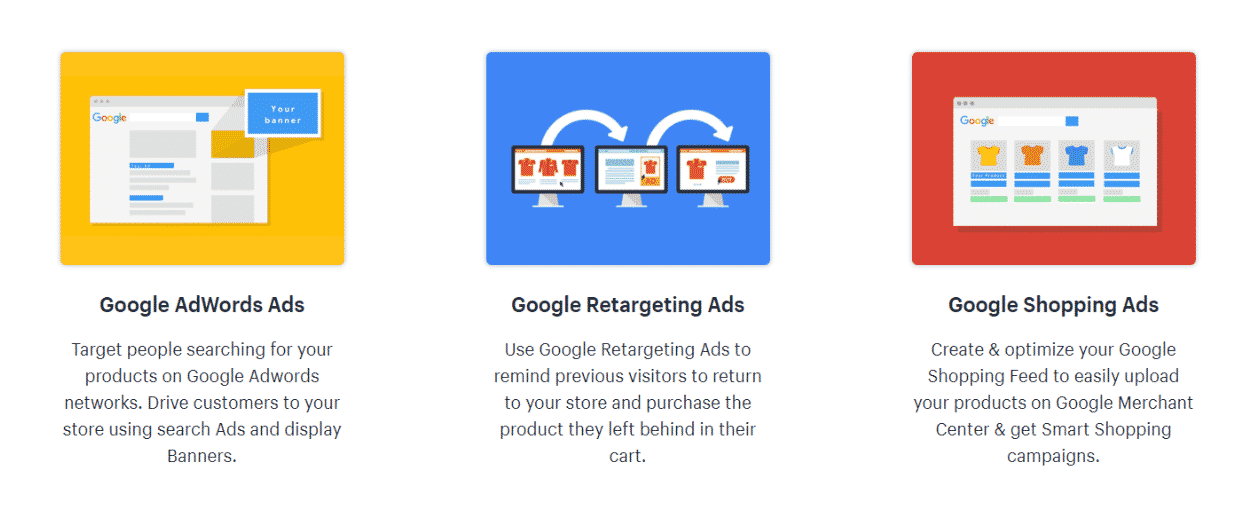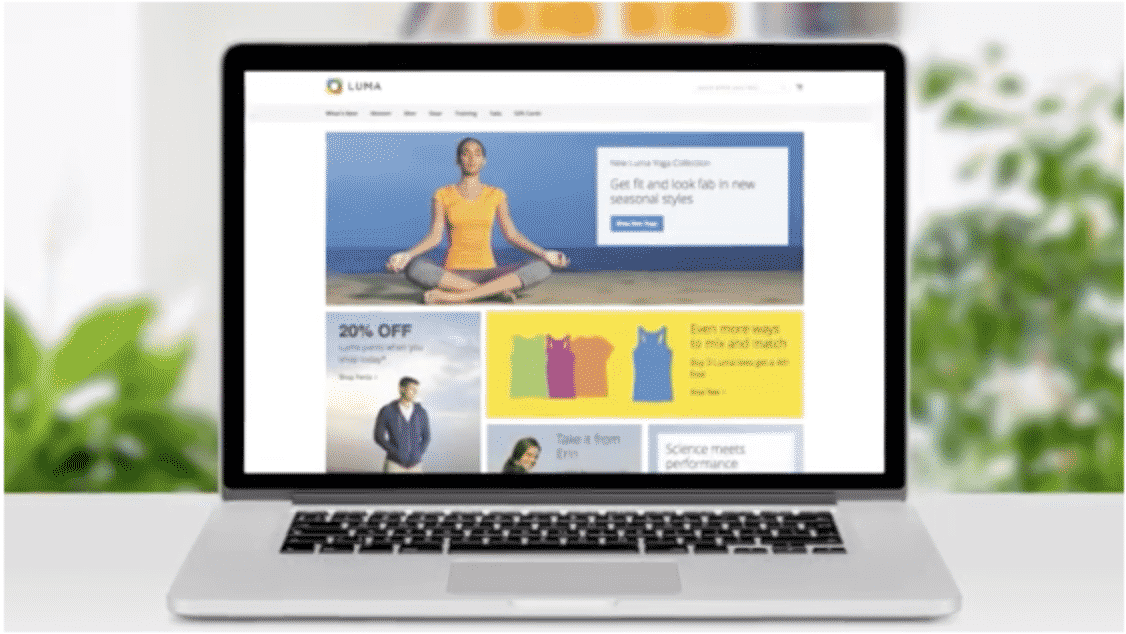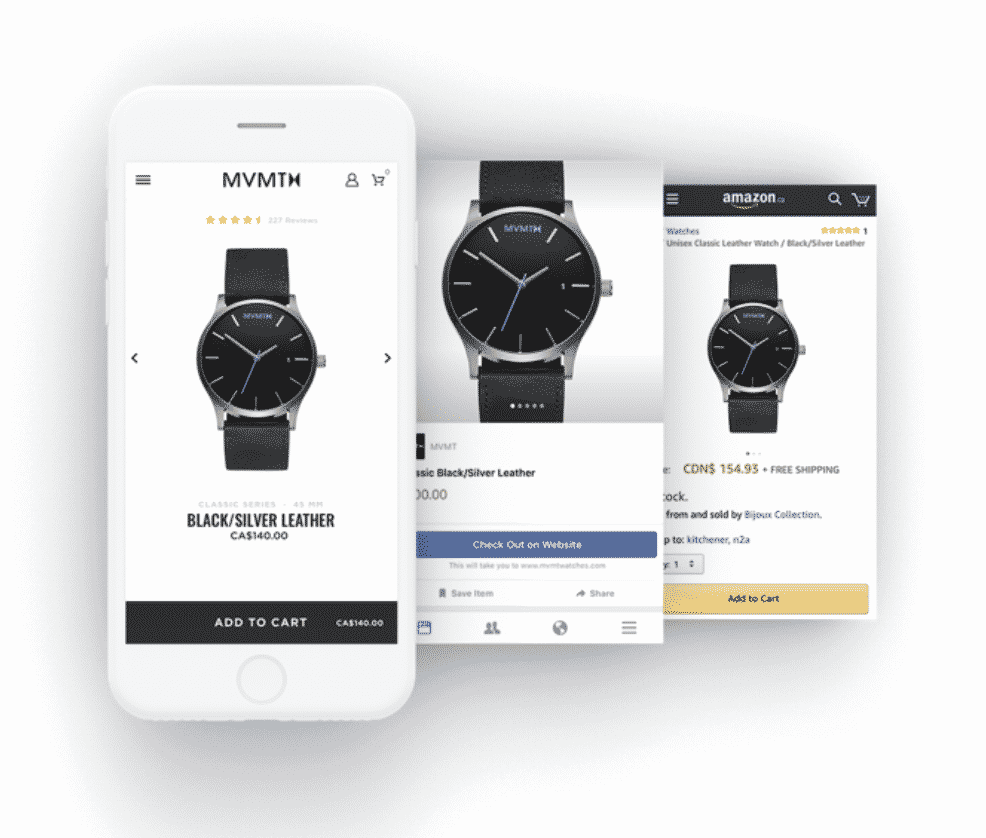It gives you the Shopify facts behind the hype; the truth before the guesswork; and the stats behind the fluff! This includes the numbers on:
- Global ecommerce in general
- Shopify store statistics
- Shopify usage statistics
- Shopify sales and revenue statistics
- Shopify growth statistics
- Other interesting Shopify stats
We’ve updated it as best as possible with Shopify sales and usage statistics from 2023 but, wherever that’s not possible, some 2023, 2021, 2020, 2019, 2018 statistics are included. As new Shopify statistics come in, we’ll keep updating so that you have the latest info at hand. Let’s get straight into it these B2B ecommerce statistics.
A few quick Shopify facts
- Shopify was started in Ottawa, Canada, in 2004 by three Canadians, inspired by a poor online shopping experience with snowboarding equipment.
- It now has over 7,000 employees and contractors working for the company.
- It is one of the most popular ecommerce platforms on the planet, with a 23 percent market share in the U.S.
- It’s second only to WooCommerce and outpaces competitors like Squarespace, Wix, Magento, Weebly, and BigCommerce.
- You don’t need to be an expert to use Shopify – it’s used by many startups.
- It’s highly flexible and easy to use, with over 6000 apps available on the Shopify App Store to customize the user experience
- There are over 100 free and paid-for Shopify themes available.
- The Shopify POS system allows online store integration in any retail setting.
- Shopify Plus, the enterprise version, allows a higher degree of customization among other benefits.
- Shopify pricing plans are affordable for most store owners, starting at just $29 per month for the basic plan.
- Shopify has a large affiliate program, where affiliates can earn an average of $58 for each user who signs up for a paid plan.
- Shopify has a large database of Shopify experts who provide marketing tasks including Shopify SEO services.
- In October 2018, Shopify opened its first brick-and-mortar storefront in Los Angeles.
-
Global ecommerce stats
How big is global ecommerce and what are a few of the main trends?
Shopify recently provided some interesting statistics to help us see where things are heading:
- In 2014, the global ecommerce market was worth around $1.3 trillion.
- In 2021, global ecommerce is forecast to hit $4.89 trillion – almost a 400 percent increase in seven years.
- In 2019, only 13.6 percent of sales were made from online purchases. It is expected to reach 19.5 percent in 2021 and 21.8 percent by 2024.
- North America is second behind Latin America in the growth of retail ecommerce sales in 2020 with Europe and Asia not far behind.
- The U.S. ($843 billion) is second to China ($2.8 trillion) in total ecommerce sales
- China is the largest single market and is set to become the first country to transact more than half of its retail sales online, with 52.1 percent of retail happening through ecommerce.
- Mobile ecommerce has seen particularly rapid growth worldwide, with Insider Intelligence forecasting that m-ecommerce will grow at a 25.5 percent compound annual rate until 2024.
It is estimated that there will be over 2.14 billion people worldwide buying goods and services online. This is up from 1.66 billion global digital buyers in 2016.
Ecommerce sales are expected to account for 21.8 percent of retail sales worldwide by 2024 (up from 18 percent in 2020).
For a check of ecommerce sales by country, go here.
Shopify aims to be “the world’s first global retail operating system” in this growing ecommerce environment.
It’s well on the way to that, as you’ll see from the following statistics…
Shopify statistics: how big is it?
If you’re considering using Shopify and are checking a few statistics first, you’ll see that you’re in good company.
You’re probably asking yourself:
How many Shopify stores are there in 2024?
If there is a go-to platform for ecommerce, it’s Shopify with well over four million stores – and on its way to five million!
However, the question is not as simple as it first sounds. It does depend on who you listen to – and what you count as a store:
- How many Shopify stores are there in 2024? As of December 2023, Shopify has over 4.8 million online stores. In terms of Shopify users by country 70% of stores are under Shopify USA then United Kingdom and Australia are second and third.
- 1.75 million merchants sell on the Shopify platform and 1.59 million live websites use Shopify (Source: Backlinko).
- 17, 683 domains currently run Shopify Plus – note merchants can run stores on multiple domains (11,788 distinct merchants currently run Shopify Plus) (Source: Store Leads).
- Shopify stores now run businesses in 175 different countries
- Approximately 42,200 partners referred a merchant to Shopify in 2020, up 72% compared with 24,500 in 2019 (Source: Shopify)
- Shopify powered 20 percent of all e-commerce websites in 2020 (Source: Statista)
Shopify usage statistics
- 71.27 percent of domains are registered in the U.S, followed by the UK and Australia (source: Backlinko)
- Shopify customers include major brands like Nestle, Pepsi, Unilever, and Budweiser, as well as innovative brands like Gymshark, Hawkers, and Leesa and celebrities like Kanye West (Sources: Shopify).
- Most Shopify merchants use apps – the most-installed apps are Product reviews, Klaviyo, Mailchimp, Instafeed, Printful, Provy and Loox (Source: Store Leads).
- As of June 2019, more than 100,000 merchants were using the Shopify POS system (Source: Shopify & You Blog)
- Customers are twice as likely to purchase a product if it has a 3D product image rather than a flat image (Source: Shopify)
Shopify sales, revenue and traffic statistics
- The latest Shopify statistics show total revenue for 2020 of $2,929.5 million, an 86 percent increase over 2019 (source: Shopify).
- Gross profit grew 78 percent to $1,541.5 million in 2020, compared with $865.6 million for 2019 (source: Shopify).
- Current forecasts have Shopify exceeding 2020 revenues again in 2021 with upwards of $3.6 billion in revenue expected by year-end (Source: Website Hosting Rating)
- As of June 2019, total Shopify platform sales from around the world are estimated at $135+ billion to date (Source: Shopify & You Blog)
- Shopify received its one billionth order in the second quarter of 2018 (Source: Shopify & You Blog)
- In the 3rd quarter of 2019, 81 percent of traffic and 71 percent of orders on Shopify stores come through mobile devices – up from 77 percent and 67 percent in 2018 (mobile traffic in 2014 was just 50.3percent) (Source: Shopify & You Blog).
- There were 457 million buyers on Shopify in 2020 – up from 218 million in 2018 (Source: Shopify)
- Conversion rates for Shopify stores are as follows: 4.29 percent email, 3.04 percent search, 2.93 percent direct, 1.81 percent social. (Source: Shopify)
- From the start of Black Friday in New Zealand, through the end of Cyber Monday in California, sales on Shopify’s platform reached more than $5.1 billion – compared with $2.9 billion in global Black Friday Cyber Monday 2019 and $1.5 billion in 2018 (Source: Shopify).
- 25 percent of Shopify’s recurring revenue comes from Shopify Plus.
-
The average shopify store revenue is $67,000 USD
- When considering GMV, Shopify has about 10.3% market share in USA.
Shopify growth statistics
- In 2012, Shopify had 42,000 merchants; in 2016 it had 377,000 merchants; in 2019, it had over one million merchants; and in 2020 Shopify reported 1,749,000 merchants (Source: Shopify)
- Since its IPO in 2015, Shopify stock has grown by a multiple of 50 (Source: Motley Fool)
- Shopify’s gross merchandise volume (GMV) increased by 95.58 percent between 2019 and 2020 (Source: Shopify) and it is 170 times greater than its GMV in 2012.
Shopify growth and revenue statistics in 2019
- In 2012, Shopify had 42,000 merchants; in 2016 it had 377,000 merchants; just three years later, it has more than double that number (Source: Host Sorter)
- Shopify’s revenue for the first quarter of 2019 was $320.5 million, a 50% increase from the first quarter of 2018 (Source: Shopify)
- Total revenue in the second quarter of 2019 was $362.0 million, a 48% increase from the comparable quarter in 2018 (Source: Shopify)
- Shopify stock has grown by a multiple of 10 since its IPO in May 2015 (Source: Forbes)
- Shopify plus merchants, with annual sales revenues from $1 million to $500 million, have seen an average year-over-year growth of 126% (Source: Shopify)
- Shopify paid over $100 million to partners in 2018, up from $79 million in the previous year, while over 700,000 people are employed directly and indirectly in the partner community (Source: Shopify and You Blog)
Shopify revenue statistics 2018
- The latest revenue statistics show a total revenue for 2018 of $1.073 billion (Source: Shopify)
- This represents a 59% increase over 2017, when revenue was $673.3 million (Source: Shopify)
- Forecast revenue for 2019 is $1.51 billion to $1.53 billion (Source: Shopify)
Other interesting Shopify statistics
- While Shopify has suffered denial-of-service and other attacks in tbe past, the platform paid ethical hackers over $850,000 between 2015 and 2018 to help secure its customer transactions and data (Sources: Tech Crunch and HackerOne).
- Some Shopify themes are recognized for their ability to convert traffic. Three of the best converting themes currently are eCom Turbo, Booster and Konversion (Source: IMRHYS)
- The Black Friday weekend is a busy time for Shopify. In 2018, it made $1.5 billion in sales during the period. Peak orders were at 10,978 per minute and peak sales volume $870,000 per minute (Source: Shopify)
- Packages from sales on Black Friday 2018 will be shipped by Shopify merchants over 30 billion miles: that’s ten times the distance between the Earth and Pluto! (Source: Shopify)
- Most Shopify sellers are first-time entrepreneurs (Source: Wall Street Journal).
- Shopify has suffered denial-of-service attacks but the platform paid ethical hackers over $850,000 between 2015 and 2018 to help secure its customer transactions and data (Sources: Tech Crunch and HackerOne).
Ready to become a Shopify statistic?
If you’ve read the Shopify facts and statistics above and would like to become part of the next round of statistics, it’s time to start growing your traffic and sales.
